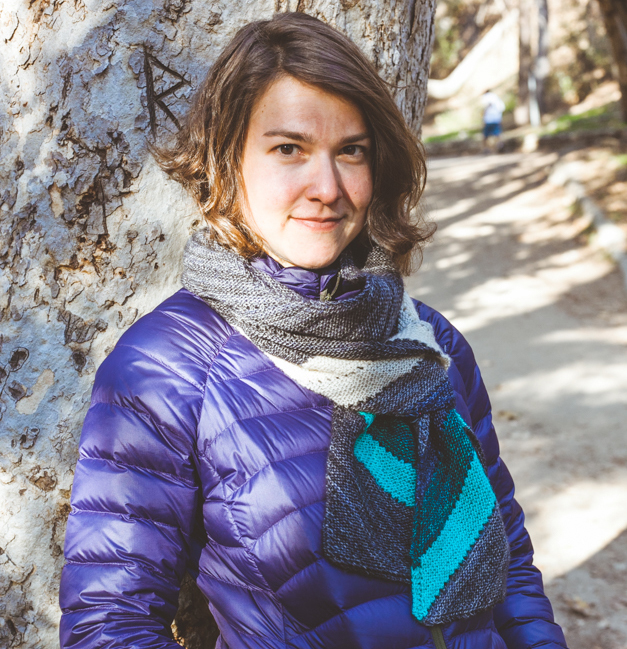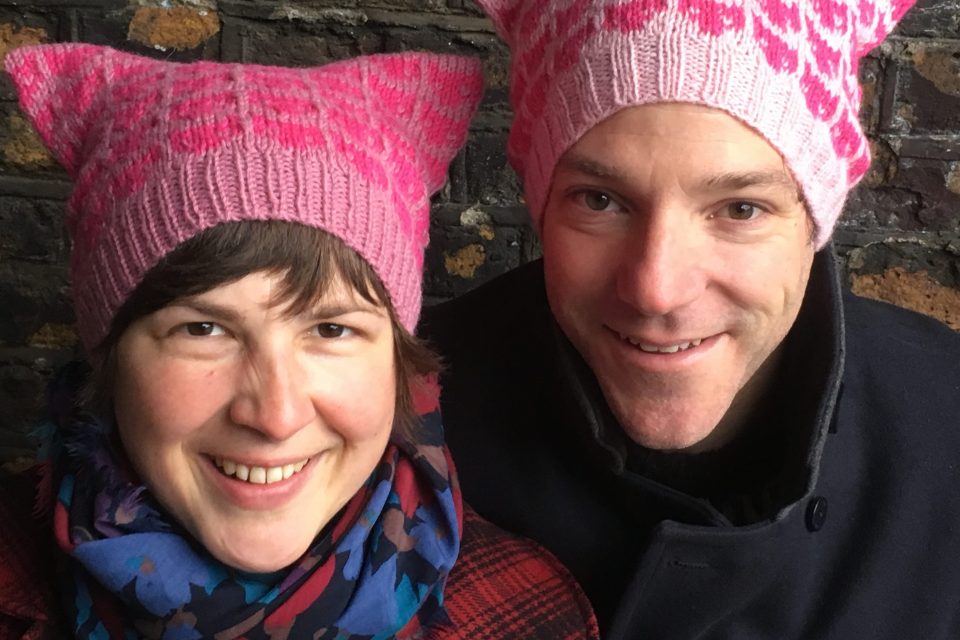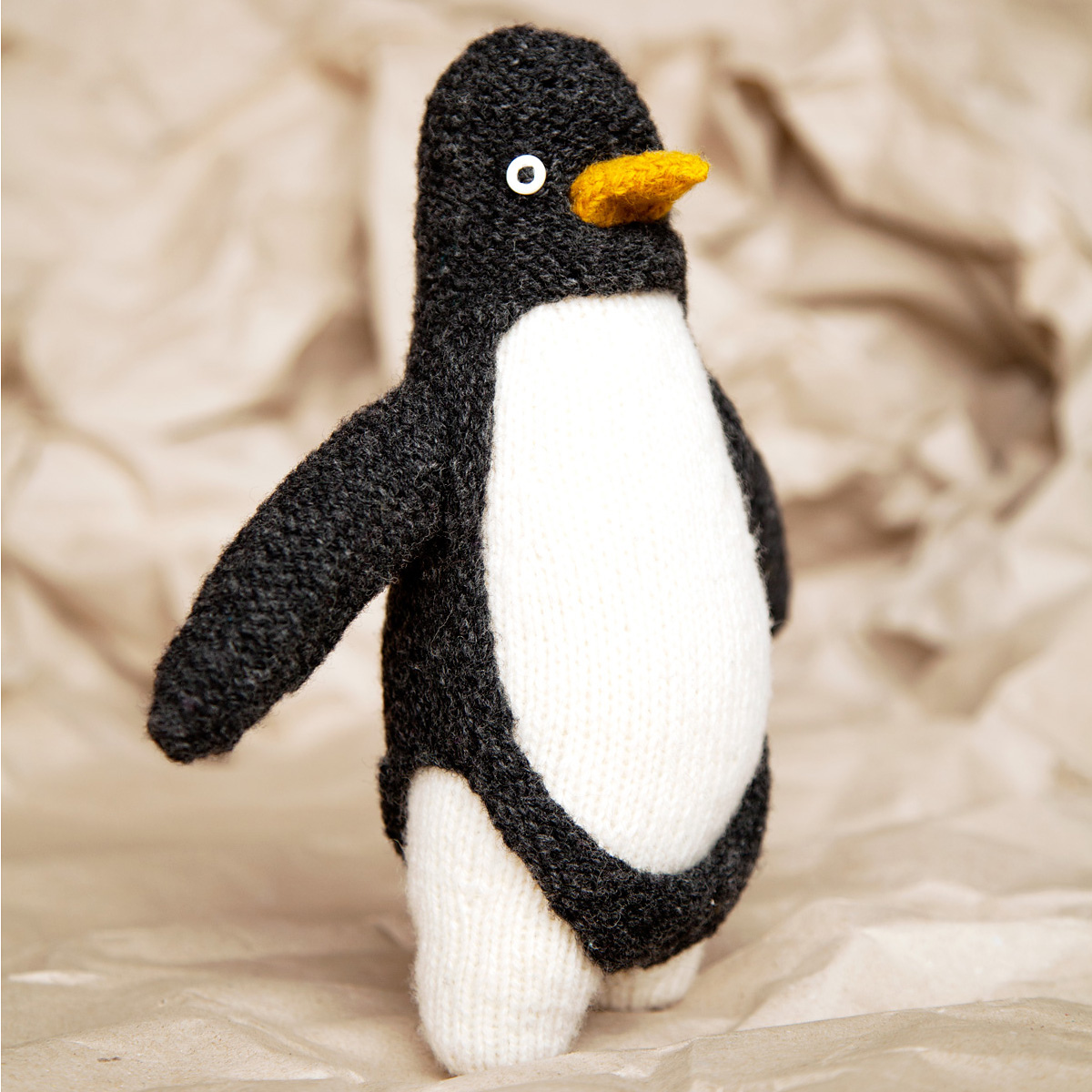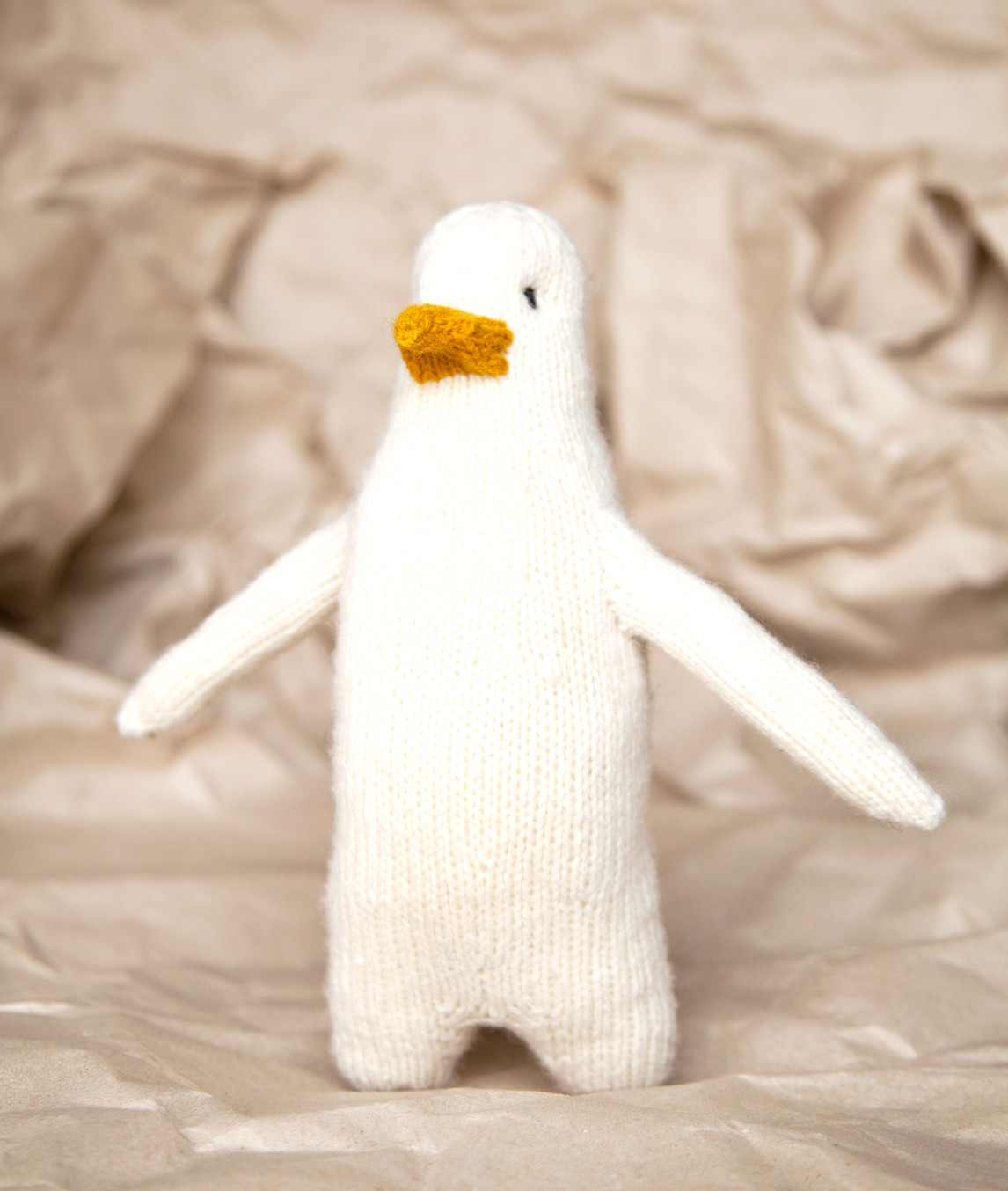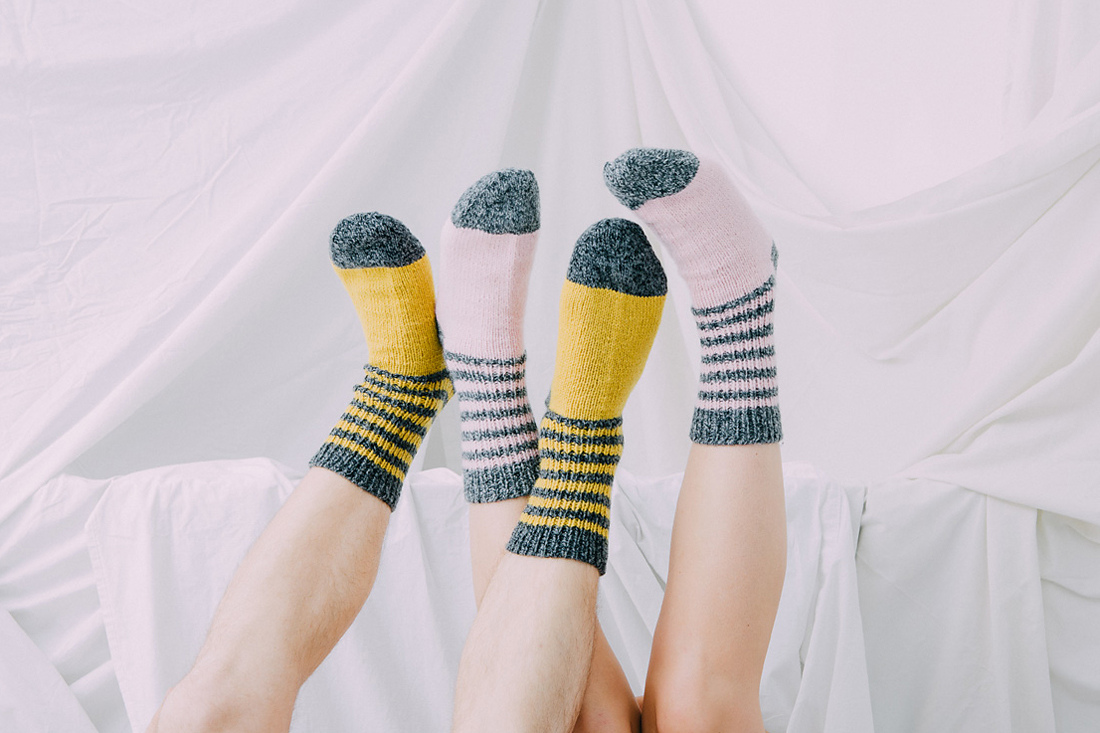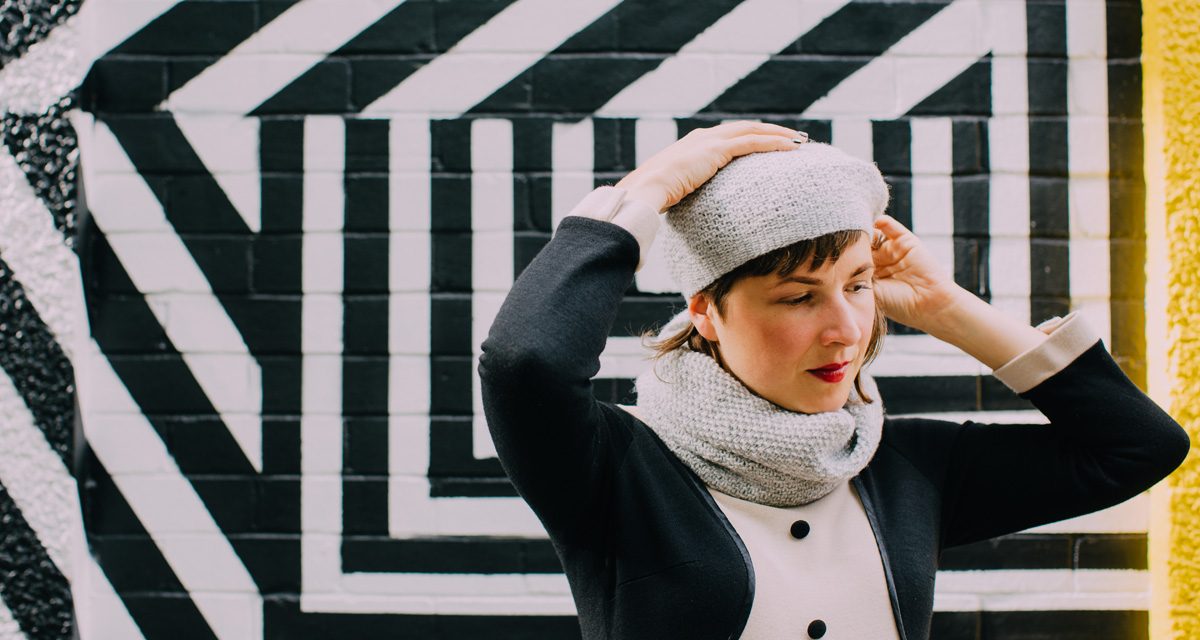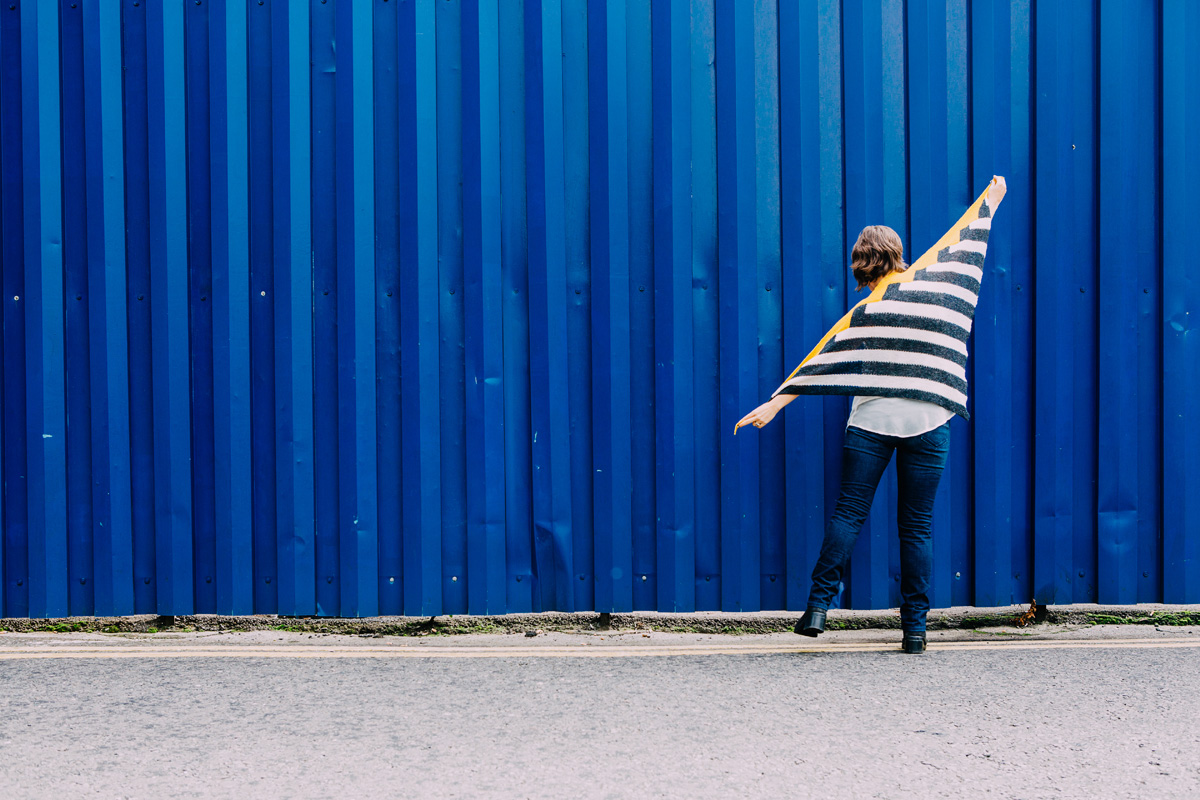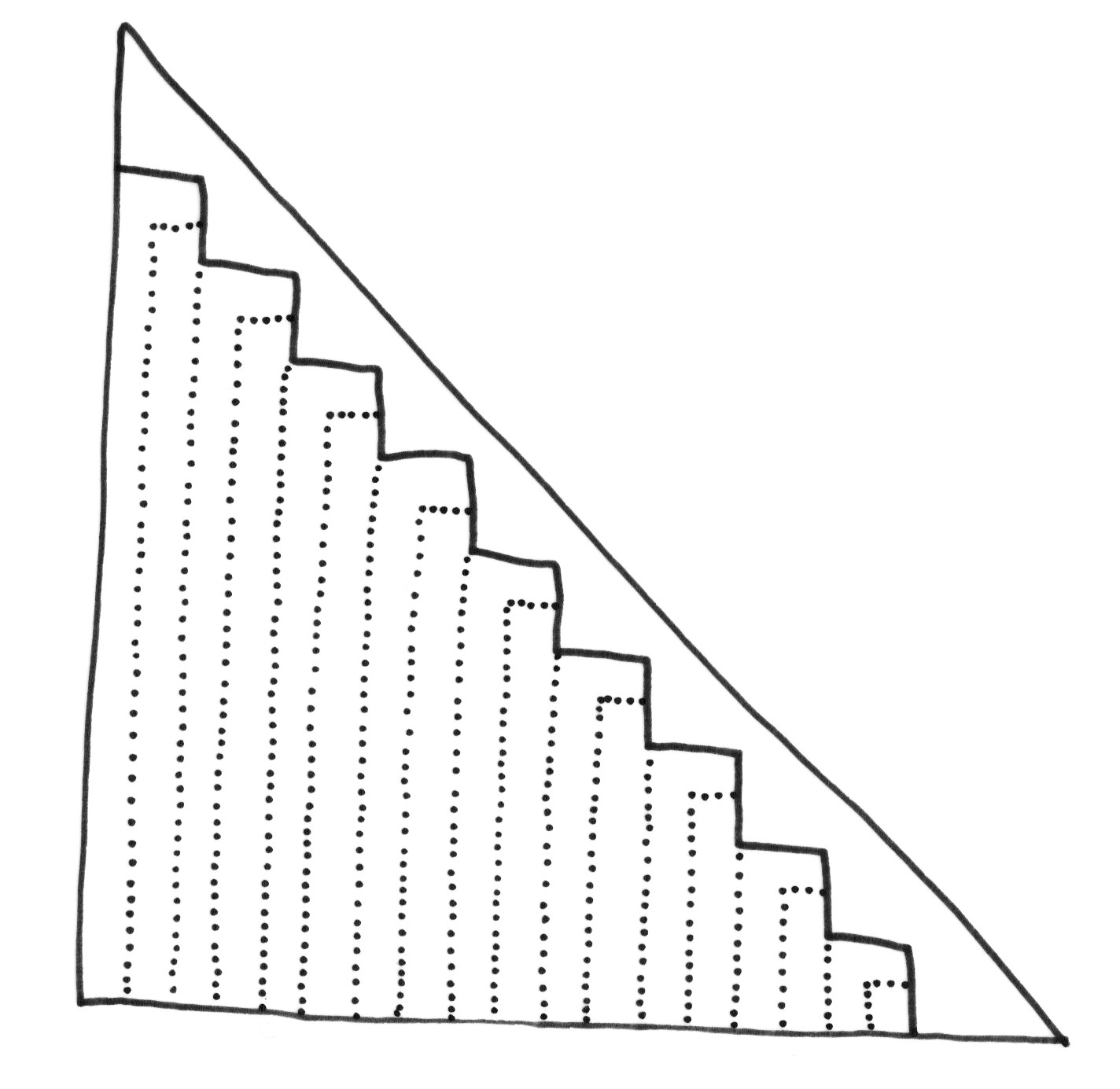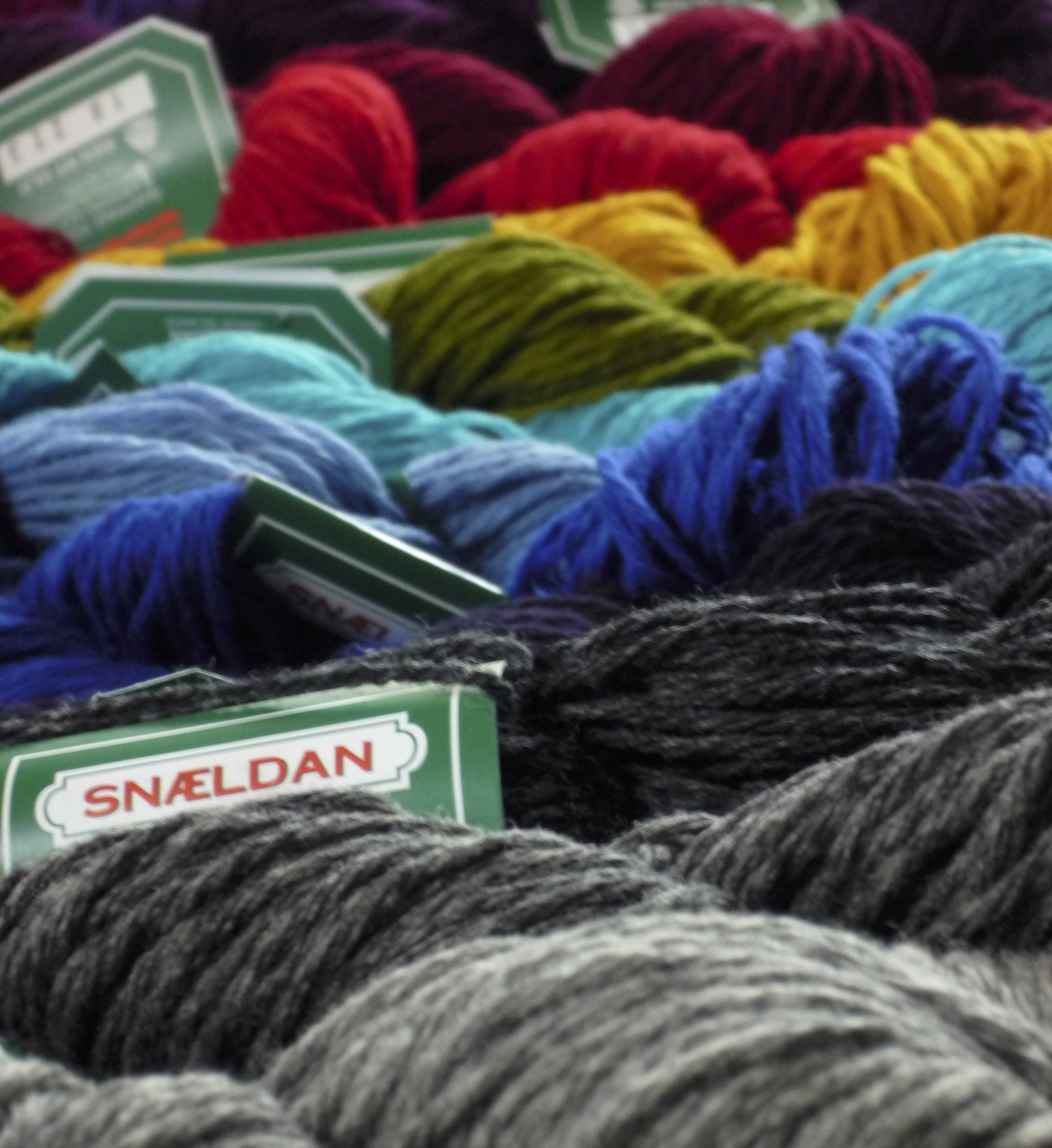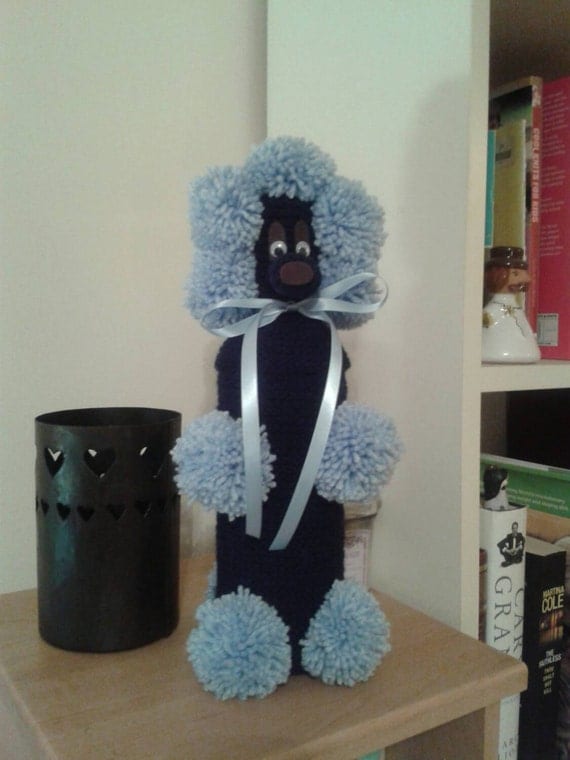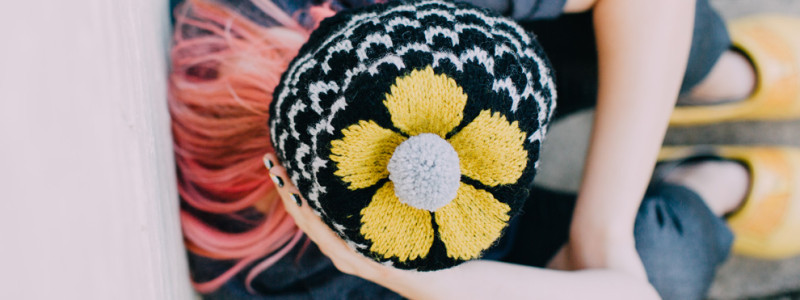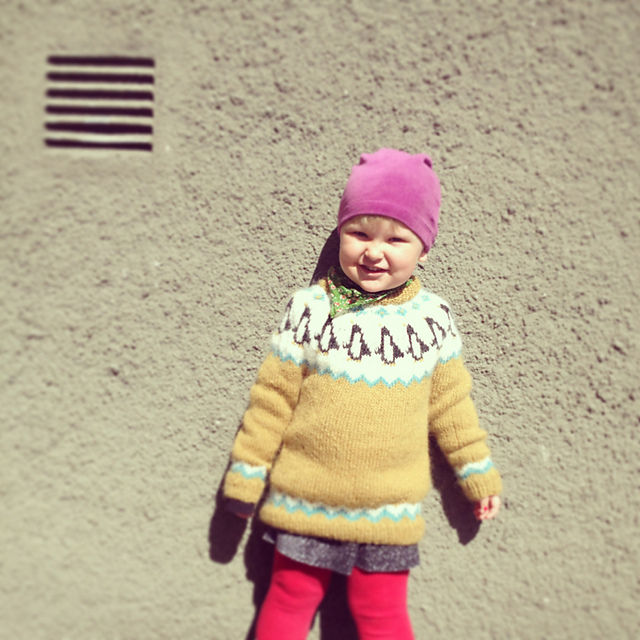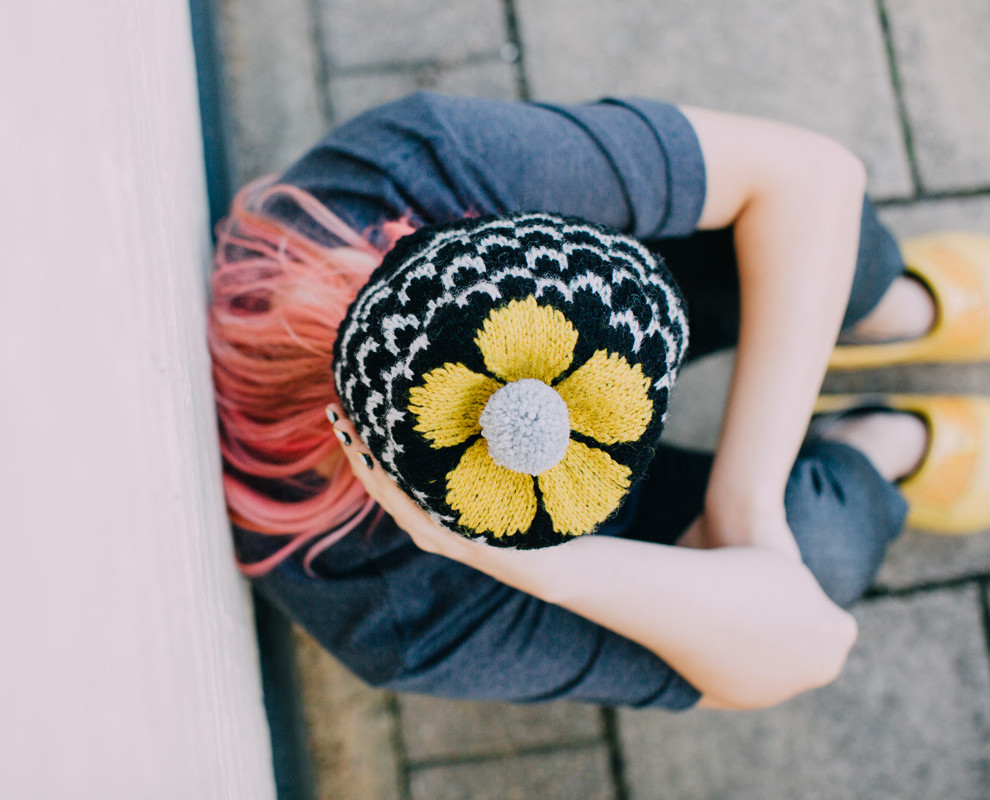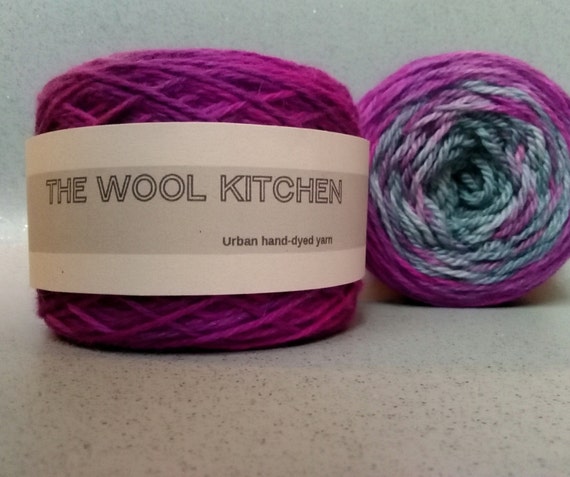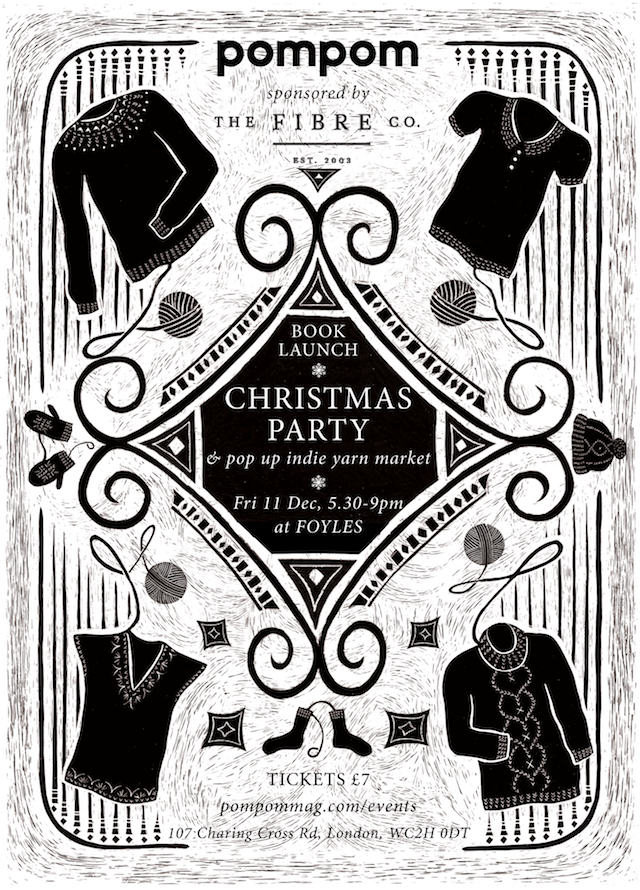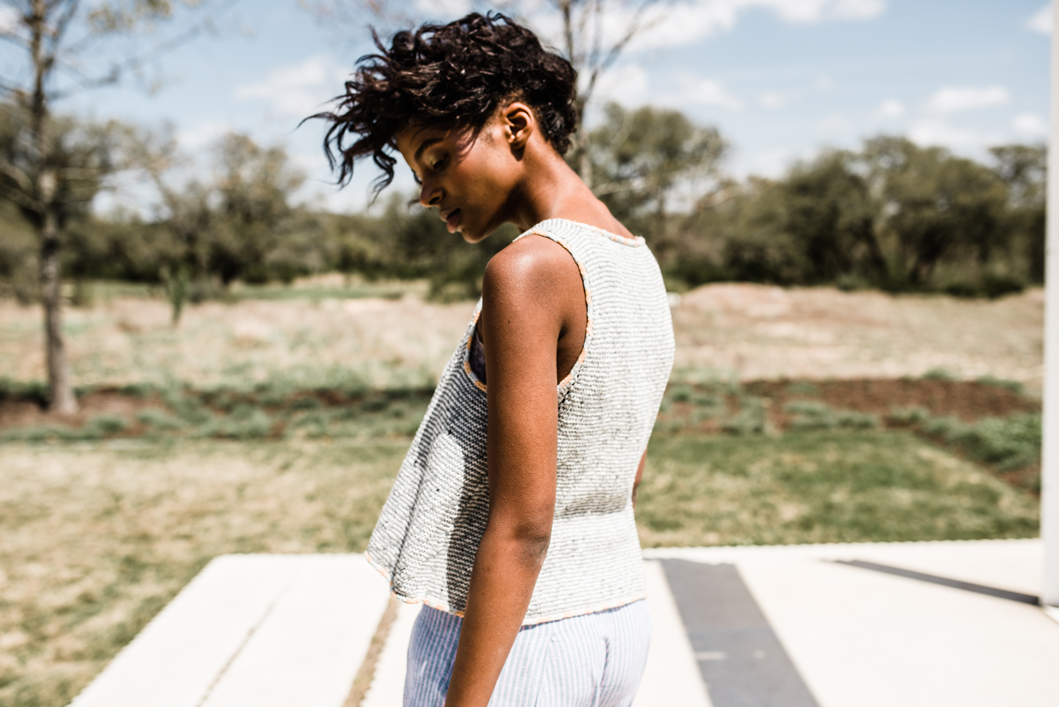
It was a pleasure to design the Tarmac Tank for PomPom Quarterly Summer Stripes Issue number 25, 2018. Most of my knits are woolly and warm, but I love adding the occasional pattern for my knitting friends who live in constantly warmer climates, both with knitting and wearing in mind. And of course, there has been a super heatwave in London (and beyond) this summer, so it’s felt like we might never need a sweater again.
The Tarmac Tank is knitted in Yoth Best Friend, a slightly slubby 4ply/light fingering weight yarn that is a combo of 75% cotton and 25% wool, perfect for all but the stickiest summer days. The addition of wool helps the yarn keep some memory (in comparison to only cotton) and the teeny bit of stretch it adds makes for a more pleasant knitting experience. The little slubs soften the monochromatic single-row/round stripes, to give them a shimmering effect, like heat rising from hot tarmac. Vertical rows of eyelet increases from 4 points introduce A-line shaping for a floaty shape.
I have been loving watching other knitters’ Tarmac Tanks appearing on Ravelry and Instagram in many different colour combinations. The endless possibilities of knitting is one of the things that keeps me fascinated (to the point of obsession) by it. I’d love to try a million different colour combos, but obviously there’s the time issue, so it’s great to be able to see what other knitters chose, and be able to knit vicariously. Some knitters are even on their second Tarmac Tank already!
There are sunshine colours (@cribbetcribbet), and earthier ones (@ribbels_ribbels). Some knitters have done away with the stripes in order to use a marled yarn (@sarahjaymes), or use a variegated yarn (@marion_strickt), while others have colour-blocked the placement of stripes. For this, two very different approaches can be seen from @mestre82, who combines the stripes with a plain section, and @annatricote, who has cast-on her second one and is using stripes of stripes, perhaps inspired by all the colour-combo testing that @meghanaf has been up to with all the shades of Yoth Best Friend. All these approaches not only add great customising options, they are really smart choices for using the yarn you have stashed. On this note, there’s a lovely one knitted by @knitcola, using an ombré of oddments. Madelene of @stickkontakt has knitted hers in fine linen, which makes it gloriously see-through.
As for the i-cord edgings, some have honoured the striped i-cord and made it pop even more (@emmaknitsthings and @fillyourknits), while some have gone with a plain single colour (@bmid.ltd, @frau.schaefer, @britt.schmeising, @sunnelite, and @josephineandtheseeds). It might have been for a different project, but I don’t think I was dreaming that I’ve seen one that uses a variegated yarn for the i-cord…
All those options have made me realise I should stop being awkward/shy/slow and just share the video I recorded while I was finishing the Tarmac Tank I knitted for myself (actually, it’s a team-knit between my mother and I, but I go into that in the video). The video is just me sitting on my couch, in my living room, talking it through, before I move to my kitchen table to give a close-up of how I work the stitches. It’s not slick, it’s not pro, but there’s plenty of info being shared. And I especially did it because there’s not much out there on striped i-cord.
I’ve split it into two parts, because, well, I’m not concise and it got LONG.
Tarmac Tank: Part One (Construction) is comparatively short, and gives an overview of the construction of the whole tank. We all learn in different ways, and some knitters might appreciate me waving the tank around and talking through what happens where, as an addition to the clear written instructions you’ll find in PomPom Quarterly.
The single row/round stripes can be worked easily without leaving a ton of ends to weave in, if you simply slide your knitting down to the other end of your circular needles or DPNs (double pointed needles).
The eyelets travel down the front and back of the Tarmac Tank in a straight line, because the eyelet increases are worked to different sides of the markers, consistently, so all the extra stitches are added to the zones under the arms. To remind yourself which happens where, it’s useful to use two different types of markers: one that you increase before slipping the marker (say, a red one or a pony) and the other that you increase after slipping the marker (say, a blue one or a kitten). I used little swing tags as markers, so I could write on them to say what happened when.
Tarmac Tank: Part Two (How to Pick Up and Knit + Striped i-cord) is a blow-by-blow guide through how to pick up and knit and then work the striped i-cord cast-off. It’s a useful tutorial for knitters who like a lengthy explanation. Though fairly intuitive to work if you are familiar with knitting i-cord (either as a cast-on, cast-off or simply unattached), striped i-cord isn’t all that common, so I’ve shared how I do it. I’ve come up with ways to mostly conceal the float between the alternating colours when working 4-row stripes. I work the i-cord over 4 stitches, whereas the pattern as published in PomPom Quarterly uses just 3 stitches. Both work, but I prefer the slightly bulkier edge that 4 stitches give.
I use my shortest length DPNs when I knit an i-cord cast-off, and I show how I do that. Using the shorties (also great for knitting fingers on gloves) avoids needing to transfer stitches every row/round, which you need to if you are simply using the other end of your circular needle. This makes for slightly more of a juggle between needles in your hands, but once it’s familiar, it means far less transferring of stitches, and feels like a speedier solution.
I also cover how I pick up and knit, to make a neater edge, by picking up and knitting in every stitch and row, and the adjusting to the required number in the following row/round.
The i-cord edging needs to be worked over a number of stitches that divides by 8. This is useful to know if you want to make the top longer/shorter – just keep/stop increasing and working as set until you have reached a length you like and then make sure the number of stitches can be divided by 8. If your total remaining stitches divide by 8, you are good to go for striped i-cord (if you are using plain i-cord, you can stop whenever you want). This is also useful to remember if you want to adjust the number of stitches around the neckline or armholes.
Somewhere along the line this got confused in the published pattern in Pom Pom, so you’ll find errata for sizes 1, 2 and 3 on the Pom Pom Quarterly Errata Page for Issue 25 for the final round before you work the i-cord. The solution given there, to increase evenly 4 times around a final round, was chosen because it works well without changing the measurements of the top and adding more instructions. Personally I would stop knitting after 20 (21, 22,23, 24, 25) times for 280 (296, 312, 328, 344, 360) sts OR continue knitting for 22 (23, 24, 23, 24, 25) times for 288 (304, 320, 328, 344, 360) sts RATHER THAN the printed 21 (22, 23, 23, 24, 25) times for 284 (300, 316, 328, 344, 360) sts. This hasn’t been suggested in the PomPom errata, because it has a knock-on effect to the measurements of the top, and those are more lengthy to change. It’s super intuitive to do when you are knitting, so it’s really nothing to worry about, it’s just frustrating if you don’t catch it, and your striped i-cord doesn’t slot in exactly.
I love this knit and I have been wearing my Tarmac Tank a lot this summer. It’s a lot of simple stocking stitch, but with enough little clever details to satisfy and tickle the brains of the cerebral knitters amongst us. And seriously, striped i-cord – I could put it on everything!
And, before anyone asks, no, the pattern isn’t available as a single pattern outside of PomPom Quarterly number 25 until next summer (edit Nov 2019: it is available now though: HERE). The top I am wearing in the video is made by Marilla Walker from her Maya Collection of sewing patterns. The marbled leggings I got in 2012 from Diana Reynolds in Sydney. She used to make them for sale in her Etsy shop, Gallery Diana. The photographs of the gorgeous model, Kandia (@kandianzinga) were taken by photographer Laura Morsman (@lauramorsmanphotography) for PomPom Quarterly and I have used them with their kind permission.













